When the island finally appears in the plane window, it is a bit like Godzilla rising from the foaming Mediterranean. Rugged and imposing like an impregnable fortress, Corsica is as beautiful as it is intimidating. An island with astonishing geographical diversity, glittering bays, forgotten mountain villages and rugged ridges combined with sunburned loam plains and pristine gnarled forests, Corsica is the Jurassic Park of Europe.
The Cap Corse at the northern tip is 40 kilometres (25 miles) long, between 10 and 15 km (6-10 miles) wide and is often referred to as Corsica in miniature. This part of the island resembles an extended finger in relation to the rest of the island. It is this spit of land, from Macinaggio to Centuri, that we explore on our road trip.
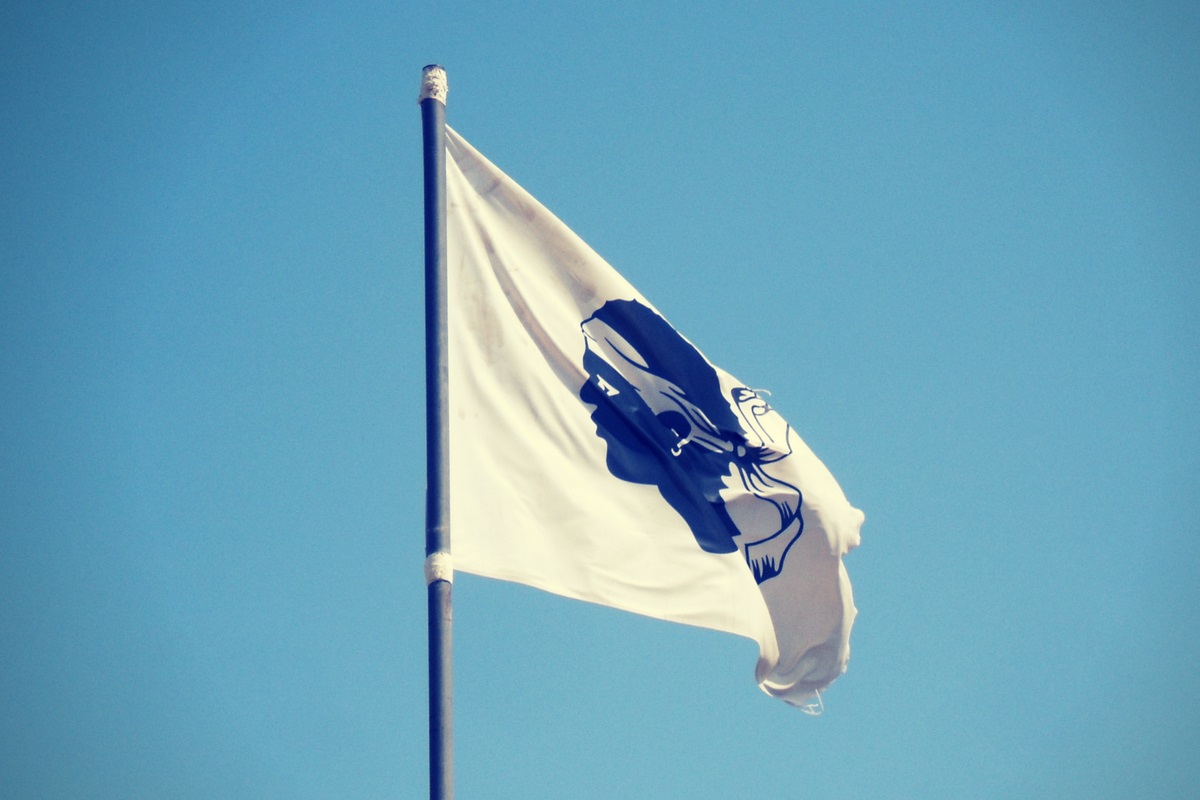
Going on Vacation in Corsica Without an Auto is Like Running a Marathon in Flip-Flops
To make a long story short: It is possible to explore Corsica by bus and train, but buses run infrequently and the trains don’t go to all of the destinations presented here. Without a car, a traveler is almost immobile on vacation in Corsica. As you drive into the mountains, plan on an average speed of about 40km/h (25 mph).
The roads often have a sheer drop off next to the road, where it goes down steeply for hundreds of metres (a real challenge for the passenger) and no crash barrier to offer protection. You will be on roads that offer U-turns with more of a climb than in the high mountains. Second gear is often the standard here. And if a car is coming from the other direction, the road is often not wide enough to accommodate passing each other.
The North is Deserted, and That’s a Good Thing
Corsica is not only tourist spots. Corsica has everything you might want. You can see its wilderness to the left and right of the road. And its authenticity is on display in the boules game of the old men on the small squares of the picturesque coastal towns. It is the essence of the Mediterranean way of life, combined with the freedom of people; a blessed retreat for individualists with taste. The northern tip of Sardinia lies only 20 km (12.5 miles) from the southern tip of Corsica.
Many things are similar, but Corsica is noticeably more mountainous and untouched. The north of Corsica, like the east of Mallorca, is a true retreat from the touristic, crowded south of the island.
Tip: Never start your holiday in Corsica with an almost empty gas tank. Gas stations are rare on the Cap Corse. Sufficient cash is also important, as ATMs are less common here than trained cats.
First Stop: The Secret Beach
The secret beach might have a name…or no name at all. But we have the Google coordinates: 42.973432, 9.454029
We got the tip from the staff at Marina d’Oro, a hotel in Macinaggio. If you should stop there, try to get a room with a balcony overlooking the afternoon boules game. To get to the secret beach some courage is required, because the journey there goes over dusty paths, dunes and gravel roads. After the first time it is much easier and really worth it, because you will have the beach mostly to yourself.
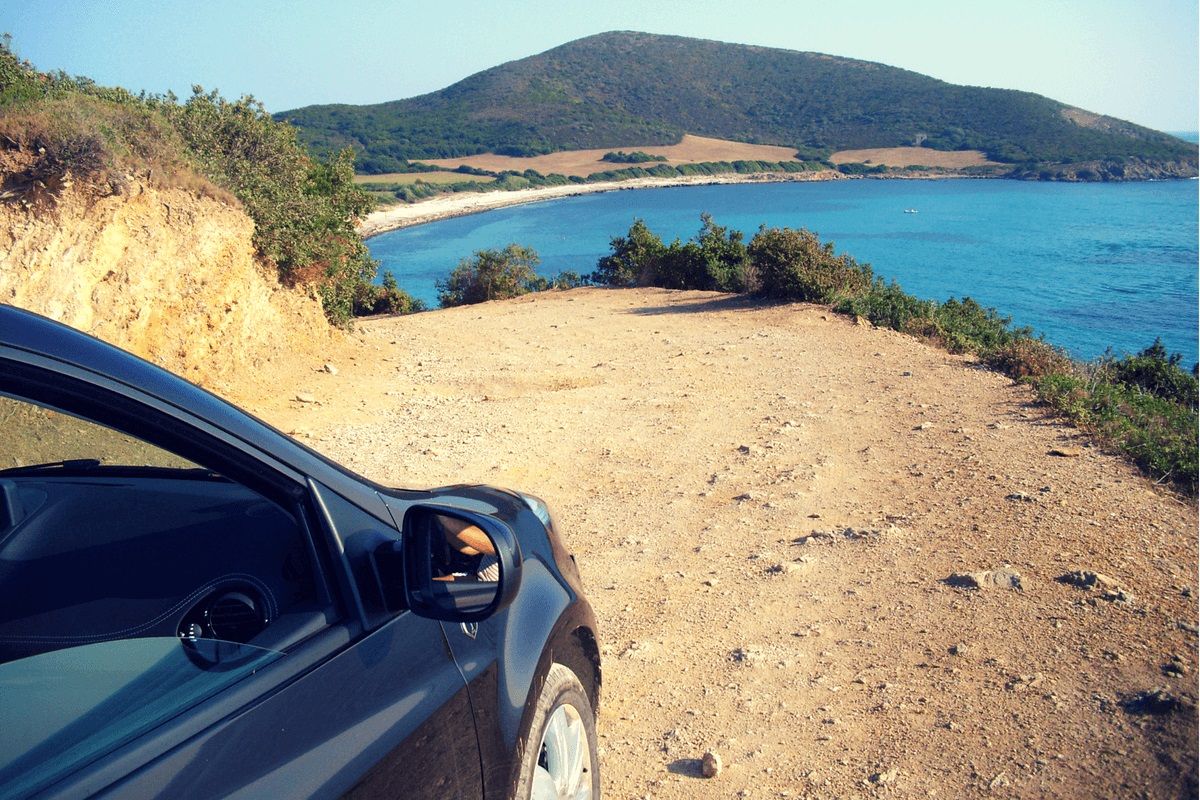
Second Stop: Rogliano
Coming from Macinaggio, after a few kilometres (a couple of miles) you reach a turn-off to the right towards Rogliano. The village is one of the most attractive mountain villages in Cap Corse and has several historical monuments, including a 15th century Genovese tower, the imposing church of Sant’Agnellu and another old church. Rogliano covers an extensive area, including a long stretch of coast and the Finocchiarola Islands. Our secret beach mentioned above belongs geographically to Rogliano.
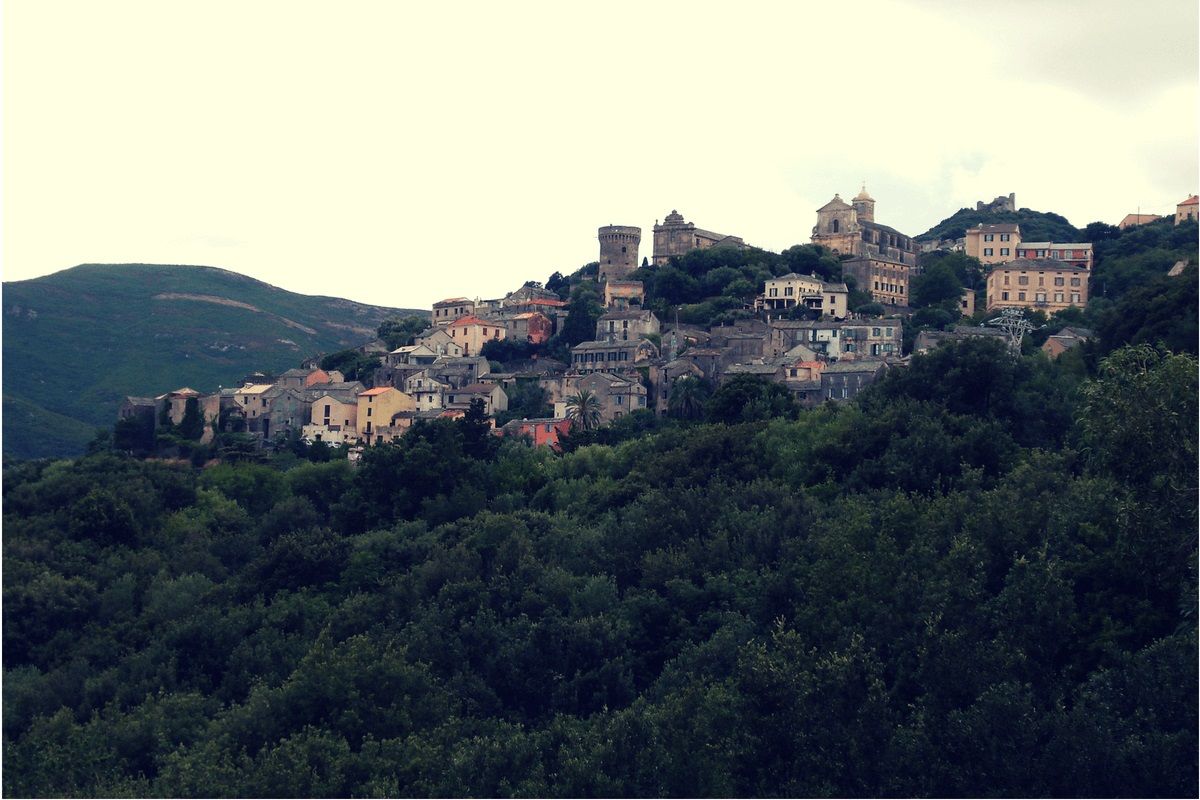
Third Stop: Moulin Mattei
The only true panoramic point at the end of the Corsican Cape, Moulin Mattei features a breathtaking 360° view of the ruins of two mills, seven windmills, Centuri, mountain villages and the sea. You can visit the eponymous old restored mill, Moulin Mattei, that was renovated by the Bastia distillery.
It is the last of the 13 windmills that were once in operation. A drawing of the mill adorns the labels of Mattei’s most famous drink, the aperitif Cap Corse Mattei that is part of every good meal in Corsica. The aperitif has a unique taste and is made from nutmeg, white wine and quinquina (cinchona bark).
Tip: If you like your hat, you should hold onto it. There’s a strong wind up here.
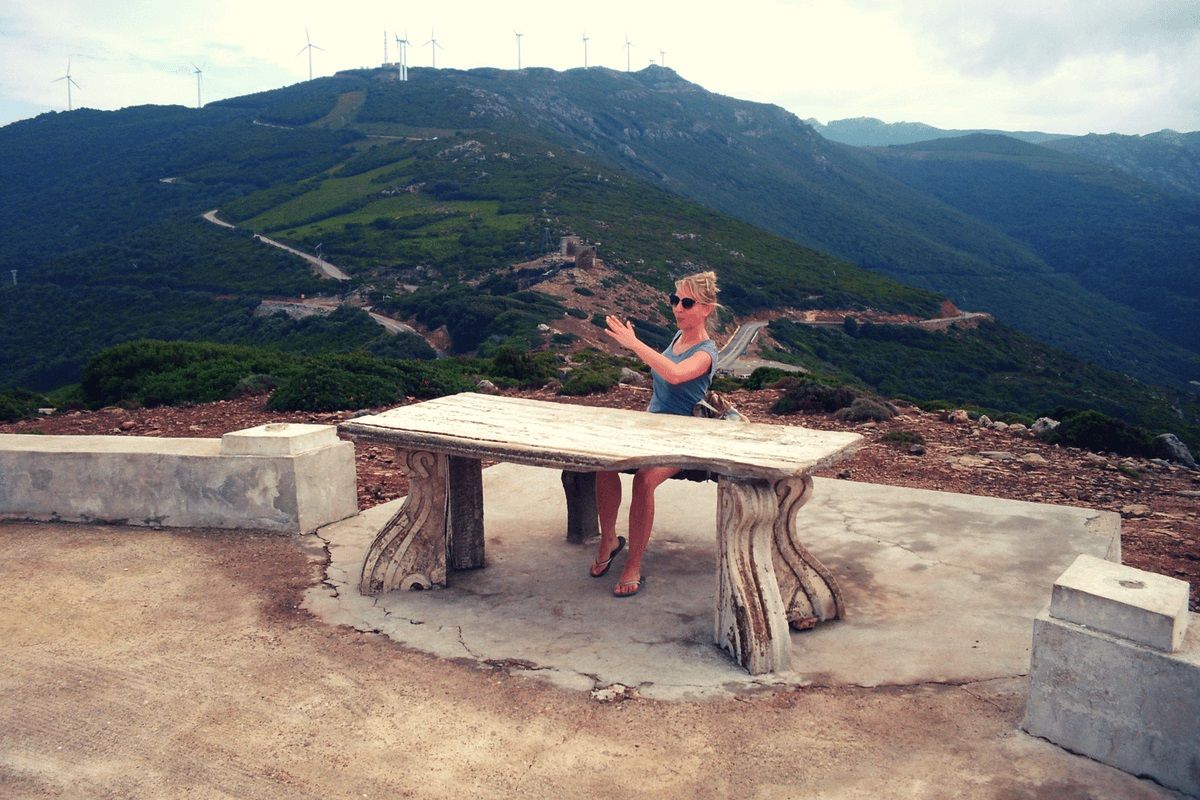
Fourth Stop: Nonza
If you think Centuri is small, Nonza has only 70 inhabitants. The tiny village lies on a 655-foot-high rock and is perfect for the efficient tourist. Here there are two sights to see in one place. It is best known for the black beach of Nonza, more than a half-mile long.
The beach gets its colour from an asbestos mine that was in operation until 1965, and its ruins can still be seen today. Looking down, you can see many oaths of love, names, figures, and patterns on the beach from above. Those intrepid enough to go down to the beach have about 1,000 steps in front of them and 15 minutes on foot, or you can park on the other end. Here a path leads off the departmental road and winds its way down to the beach.
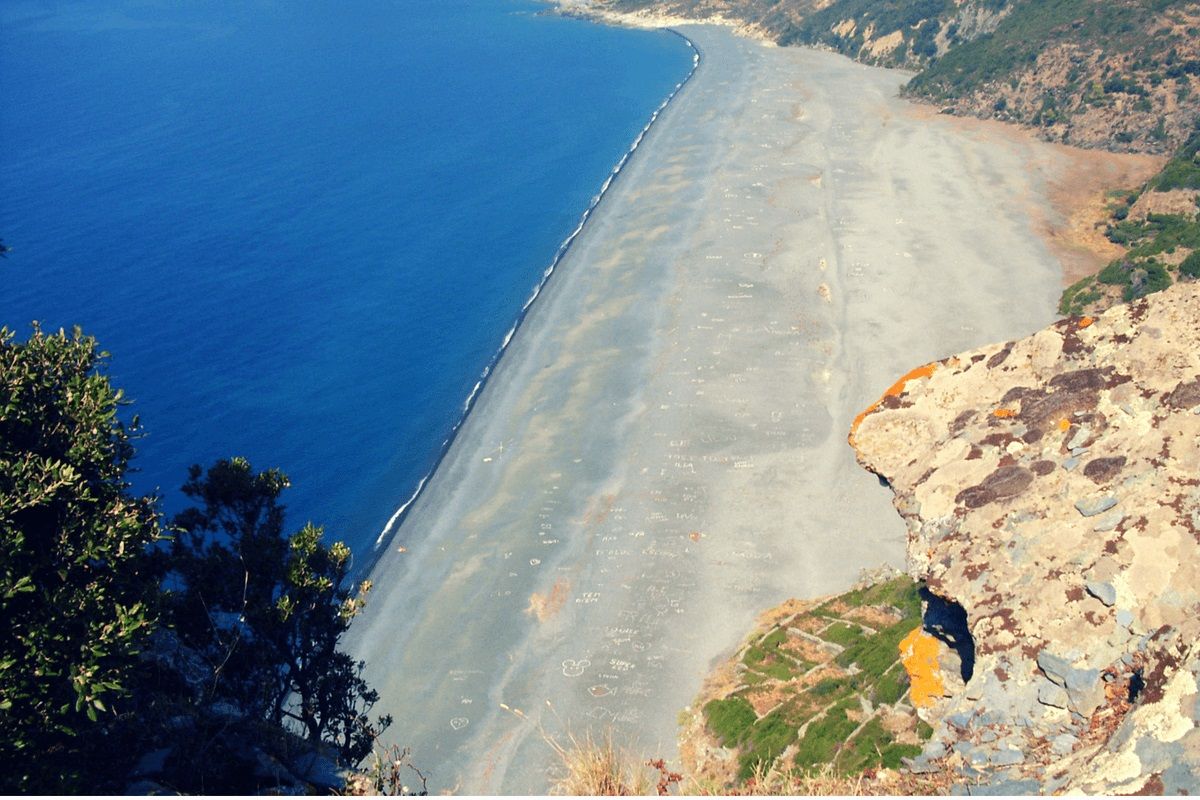
About 525 feet above sea level is the Torra di Nonza. The square tower of Nonza offers a unique view over the black pebble beach and is framed by an old military complex. And for dinner, we recommend the restaurant U Franghju, which serves Corsican specialities and has a wonderful view from the terrace.
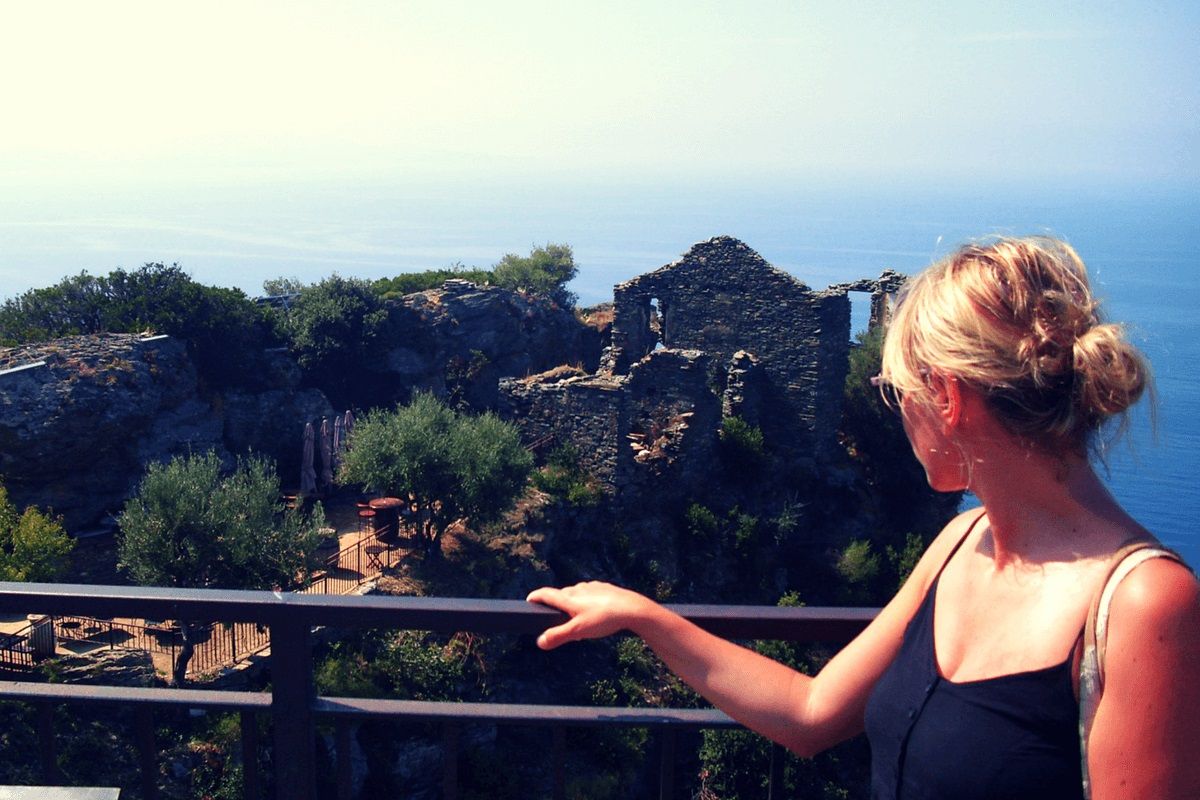
Fifth Stop: Centuri
How to describe Centuri? Like all places in Cap Corse, Centuri is still very authentic. The first thing that comes to mind are old Italian colourful Technicolour movies with Sophia Loren and Anthony Quinn. In the town with just over 200 inhabitants you will see scenes of white wooden boats with blue, orange or yellow lines; silver fish scales and nets on the docks; a glistening sun in front of a perfectly blue sky.
There is an access road to Centuri from the road along the coast that leads down to the harbor in about 10 minutes. Tourist buses rarely get lost here because the winding road leads you right there. It is said, by the way, that the small harbor is the cradle of the best French crayfish. And that’s exactly what you should eat, ideally at the restaurant La Bella Vista on the right side of the harbor. From there you have a perfect view of the fishermen’s activities and the sunset.
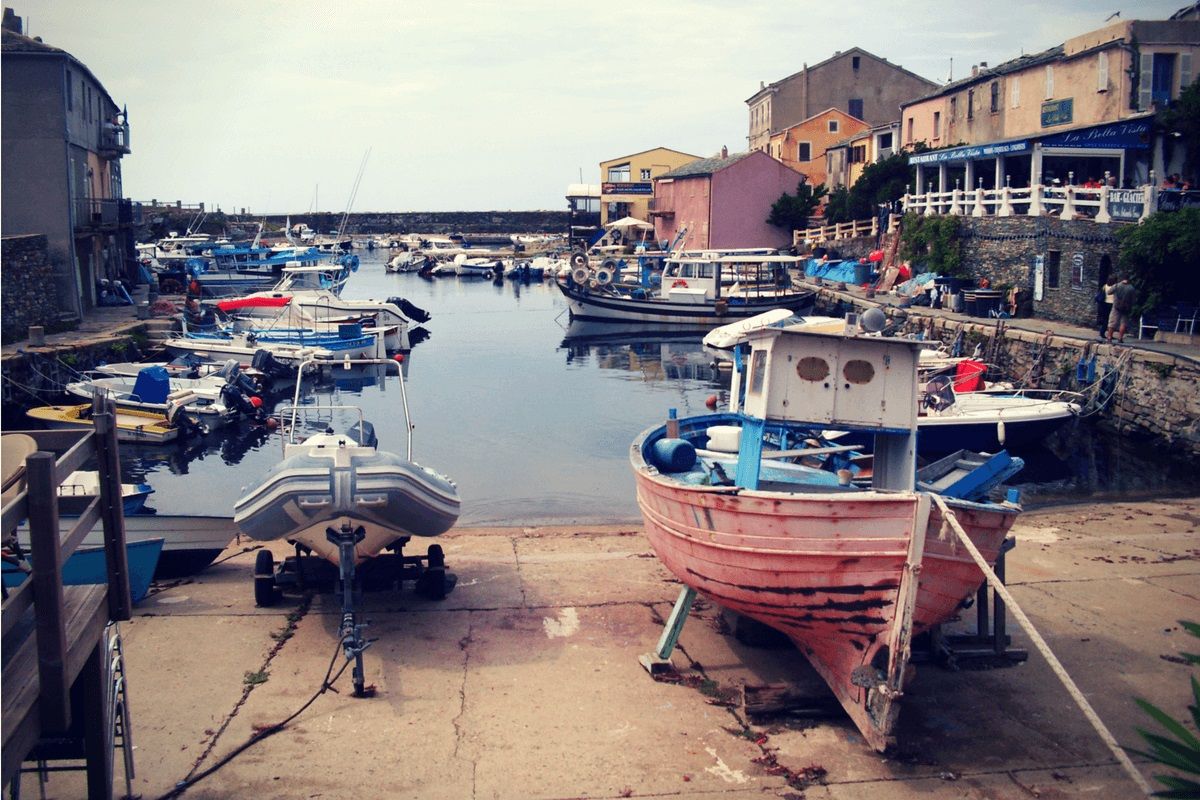
Photos and text: Jens Schwan
Most of these hidden gems are easily accessible by car, and allow you to beat the hustle and bustle of tourist traps and public transport. Sixt has two convenient car rental locations in Corsica, one at Corscia Bastia Airport, and Corsica Ajaccio Airport which allow you to pick up a car hire and explore all this stunning Mediterranean island has to offer.